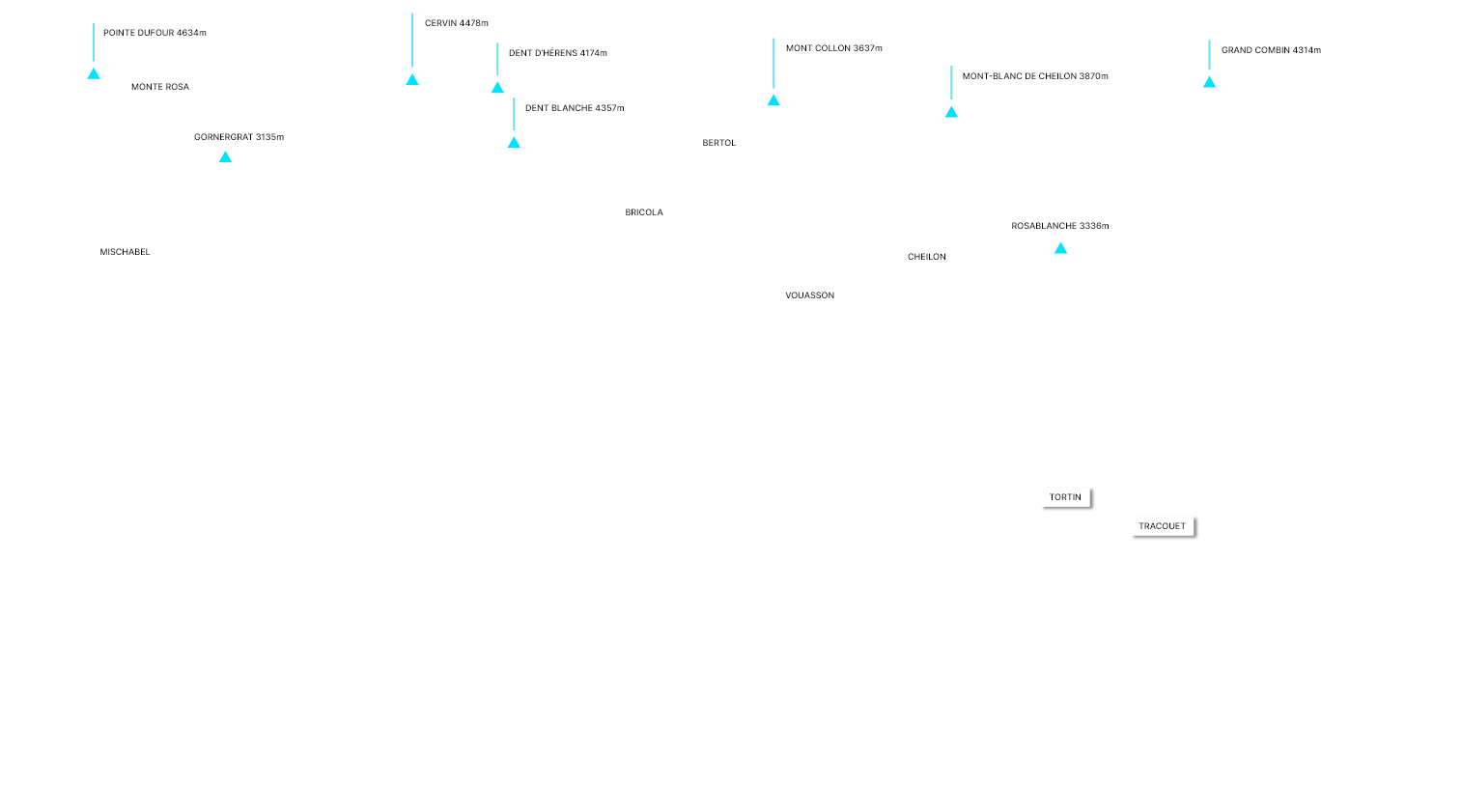History
The Grande Dixence scheme, the building project of the last century, to which every superlative applies, is a tremendous source of power. In its own way, it is also a monument to the glory of human ingenuity. This concrete temple enthroned in a mineral universe would never have been possible without the vision, intelligence, determination and courage of human beings.
History
Partners
The energy produced by Grande Dixence SA is supplied in its entirety to the four partner companies which have the share capital of the company (300 million CHF), i.e. :
Partners
Shareholding
Grande Dixence SA holds stakes in four companies:
Shareholding
Our commitment to sustainability
Our commitment to sustainability
Documentation
Online privacy Online Privacy Notice Alpiq Group (EN)Télécharger FIlm https://vimeo.com/230561324 https://vimeo.com/887256784 https://vimeo.
Documentation





Arolla 2009m
Lift height
312m
Arolla
Bieudron 481m
Power
1200MW
Bieudron
Chandoline 493m
Power
150MW
Chandoline
Cleuson 2187m
Lift height
165m
Cleuson
Cleuson 2187m
Height
87m
Cleuson
Ferpècle 1896m
Lift height
212m
Ferpècle
Fionnay 1490m
Power
290MW
Fionnay
Grande Dixence 2365m
Height
285m
Grande Dixence
Nendaz 478m
Power
390MW
Nendaz
Stafel 2180m
Lift height
212m
Stafel
Z’Mutt 1972m
Lift height
365m / 470m
Z’Mutt
The most powerful hydroelectric complexin Switzerland
From the energy of water
to energy of people.
The Grande Dixence scheme, the building project of the last century, to which every superlative applies, is a tremendous source of power. In its own way, it is also a monument to the glory of human ingenuity. This concrete temple enthroned in a mineral universe would never have been possible without the vision, intelligence, determination and courage of human beings.
Environmental impact
The current facility has contributed to the creation of an extended nature reserve in the Val des Dix, filled with rich and varied flora and fauna. The Cleuson-Dixence has been subject to various major ecological offsetting measures to preserve the environment.
Environmental impact
Production
Storage lakes are a reserve of energy available on demand. While nuclear power plants and run-of-river hydroelectric power plants produce ribbon power, 24 hours a day, storage power plants make it possible to generate what is known as peak and regulating energy that is available as quickly as possible and can flexibly compensate for fluctuations in electricity demand. Particularly with the development of new renewable energies, such as solar and wind power, whose production is intermittent and random, and the gradual decentralisation of power generation to many smaller units, storage power plants help to provide the right amount of electricity around the clock.
Production
The hydroelectric complex
The Grande Dixence and Alpiq hydroelectric complex uses the waters of the Dixence, Printze, Chennaz, Borgne and Visp basins to produce electricity according to the needs of its shareholders.
The hydroelectric complex
Longitudinal profile
To make use of the water from the Lac des Dix, three production plants are needed.
Longitudinal profile
Water management
Running the complex to maximise performance requires a fine balance between the demand for economy and technical capacities. The operating centres at Grande Dixence and Alpiq receive the constant information required for management and supervision of the whole facility directly from the various plants as well as from numerous measuring points. They are also able to intervene at any moment on any of the operating components.
Water management
Collecting works
Bringing together waters from a catchment area of 420 km2, two-thirds of which is covered in glaciers, that is the task of the facility’s network collector. 100 kilometres of galleries, including a main tunnel which is 24 kilometres long, at an altitude of 2,400 metres, in the heart of the mountain, bring together the waters which run between the Mischabel, Matterhorn and Mont Gelé mountains. 35 glaciers therefore supply the facility’s raw material, via 75 water intakes and 5 pumping plants, on average around 500 million m3 of water every year.
